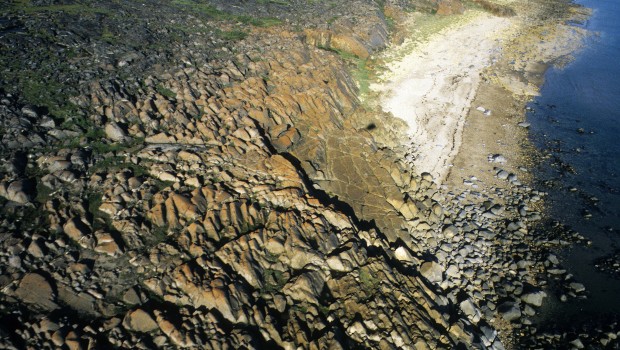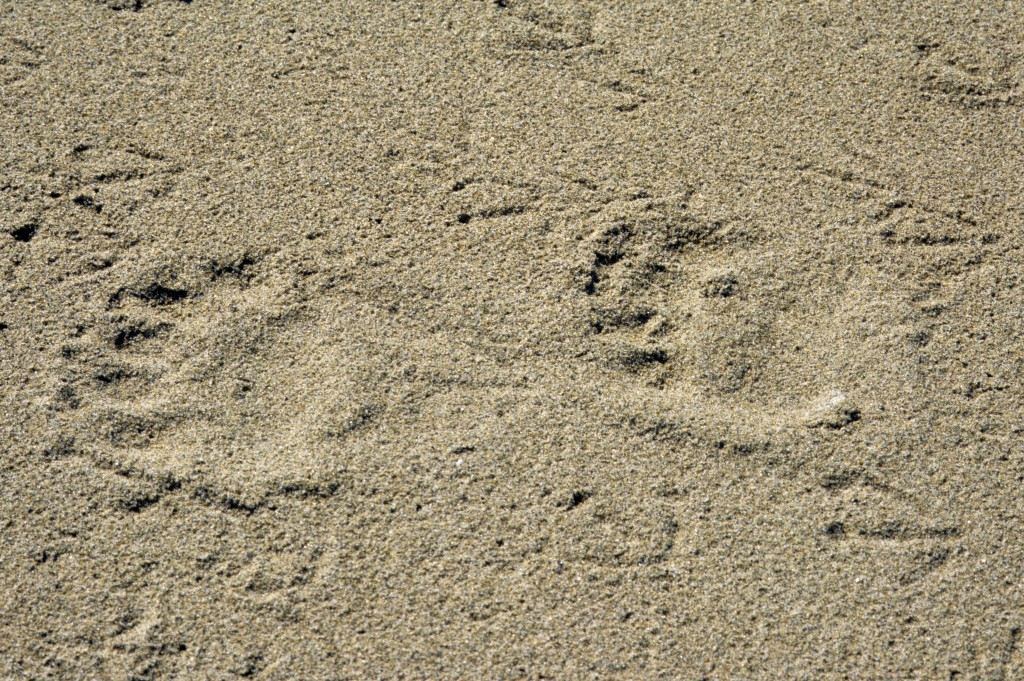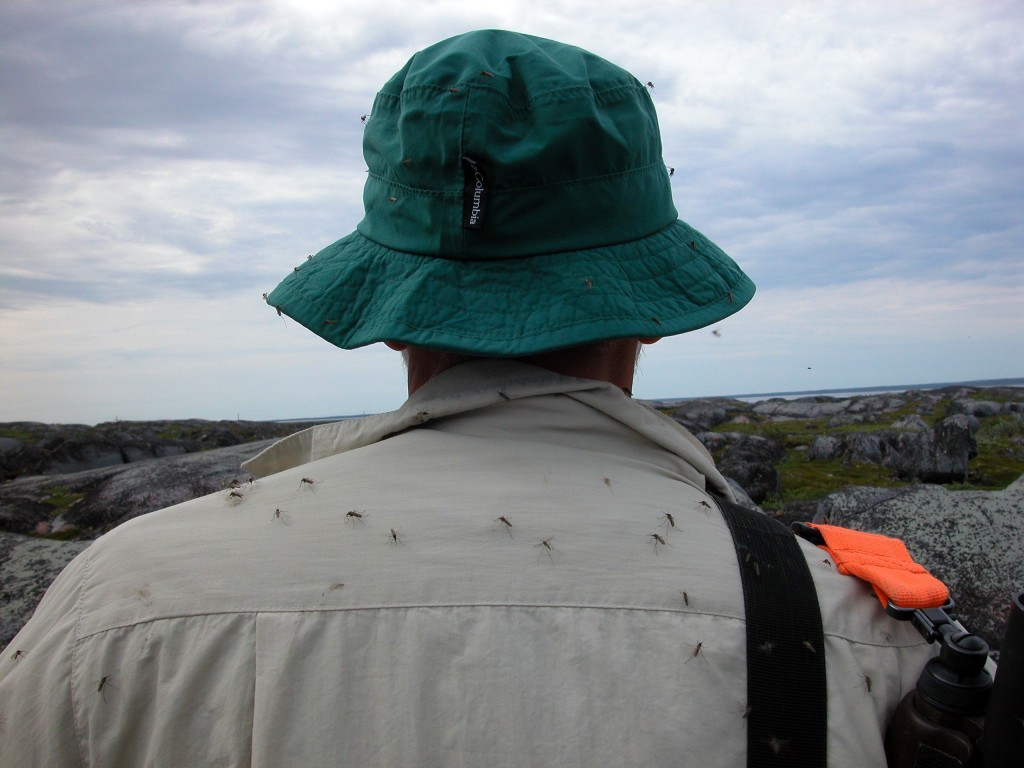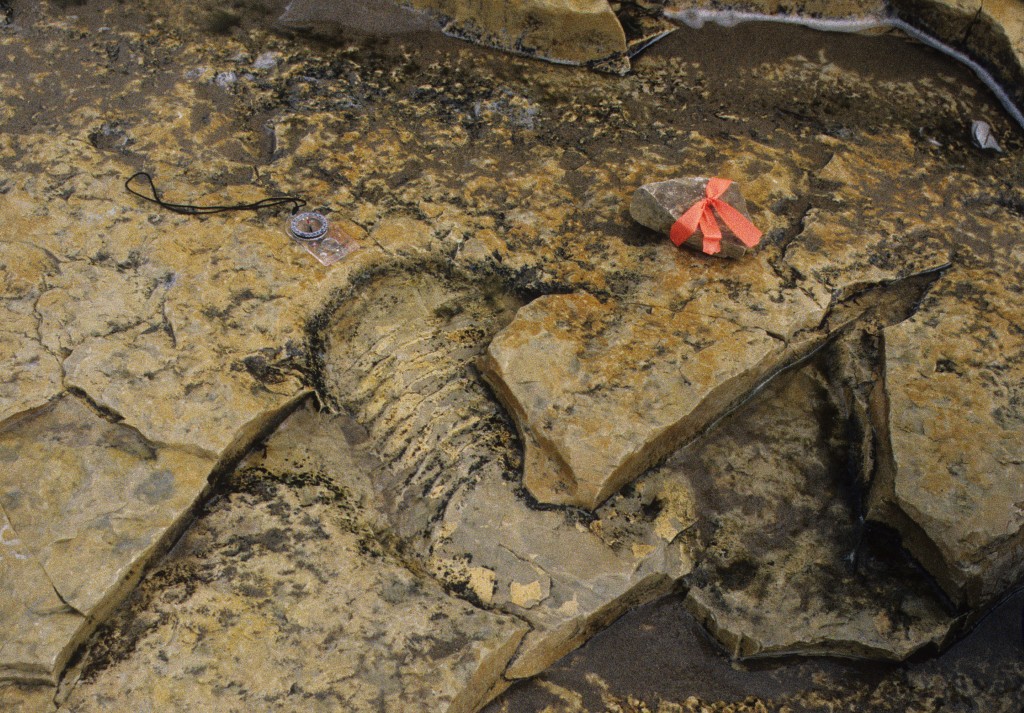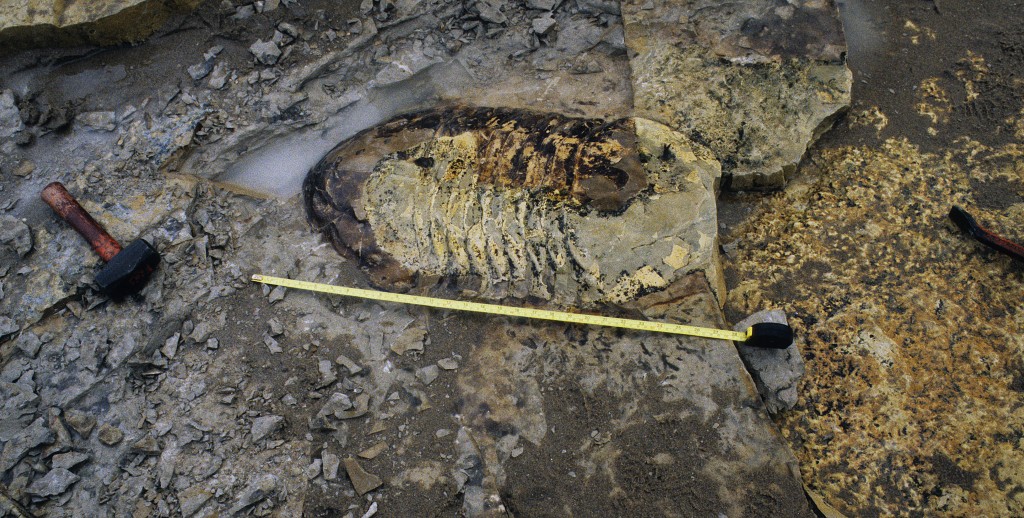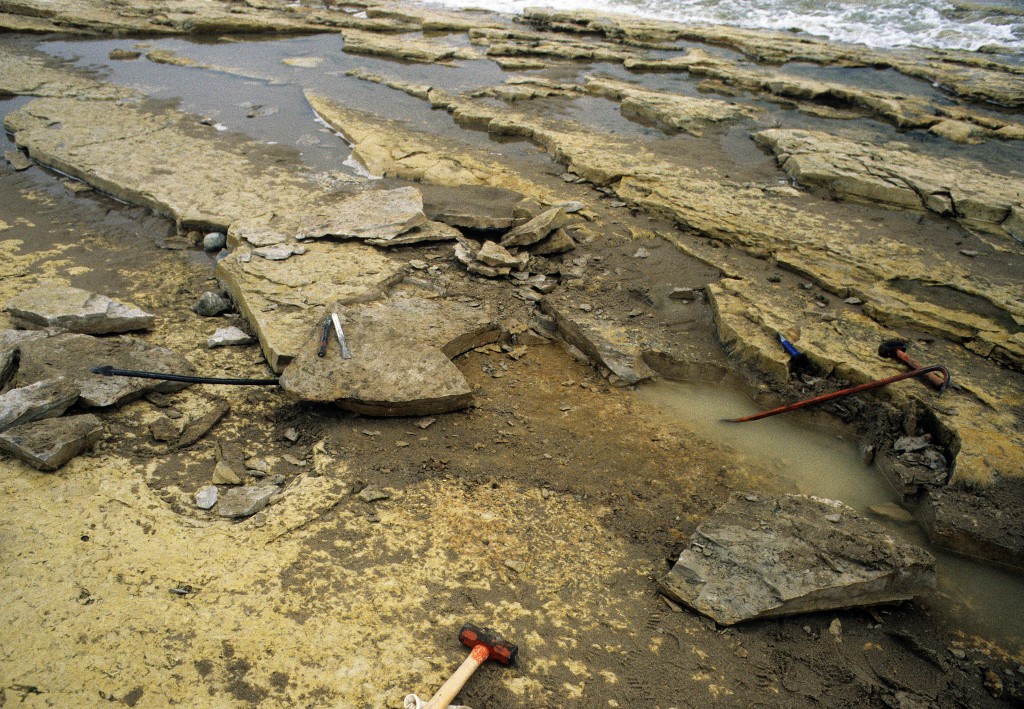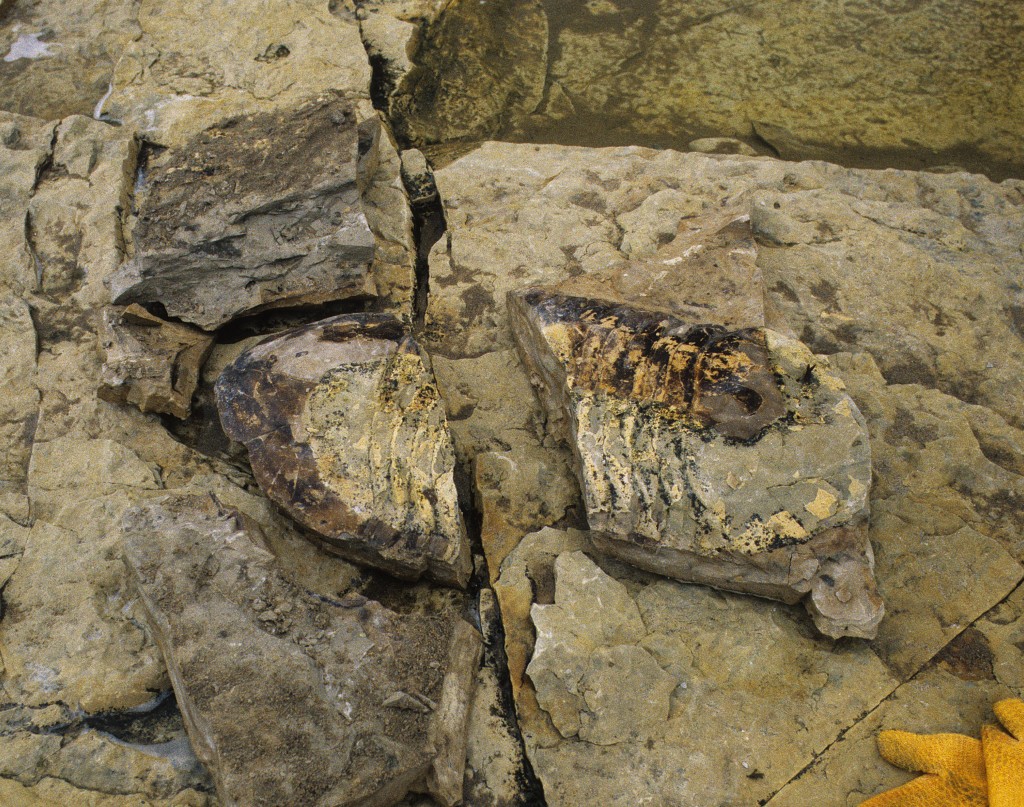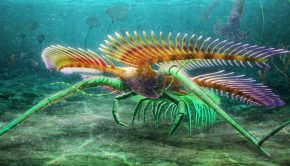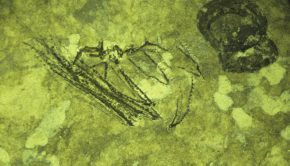Episode 2: Isotelus rex
In June we got the opportunity to speak to Dave Rudkin, curator of arthropods at the Royal Ontario Museum, Canada. In our interview we covered his discovery of Isotelus rex, the world’s largest trilobite, and discussed arthropod gigantism.
Podcast: Download (Duration: 38:37 — 53.0MB)
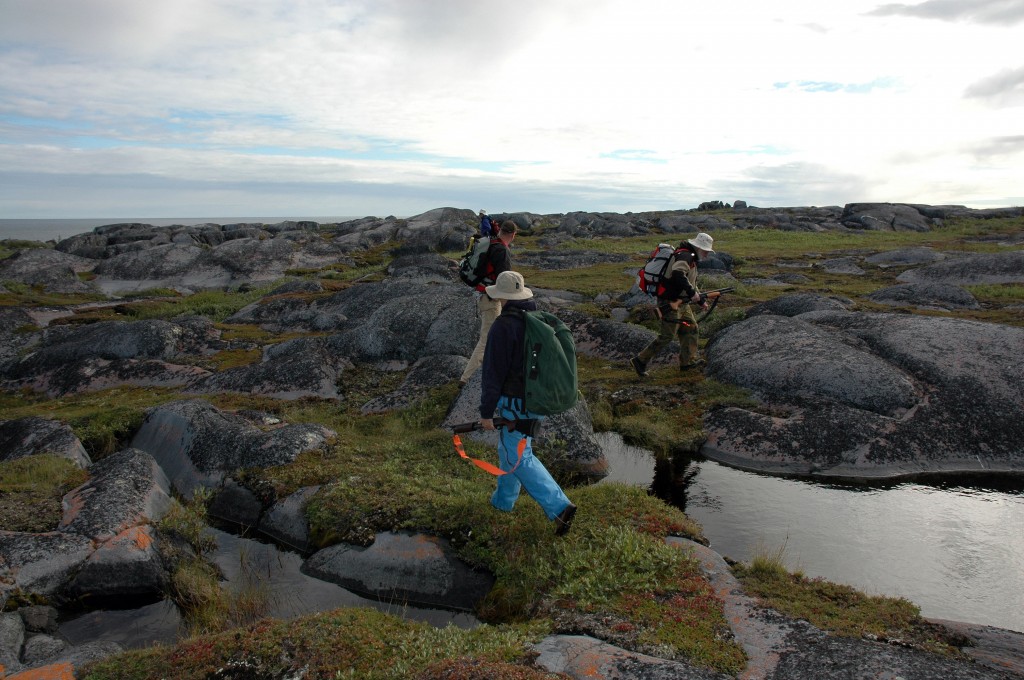
Crossing the tundra to the Isotelus rex locality was not easy going; the nearest road was a few kilometers away and shotguns had to be carried in case a polar bear was encountered.
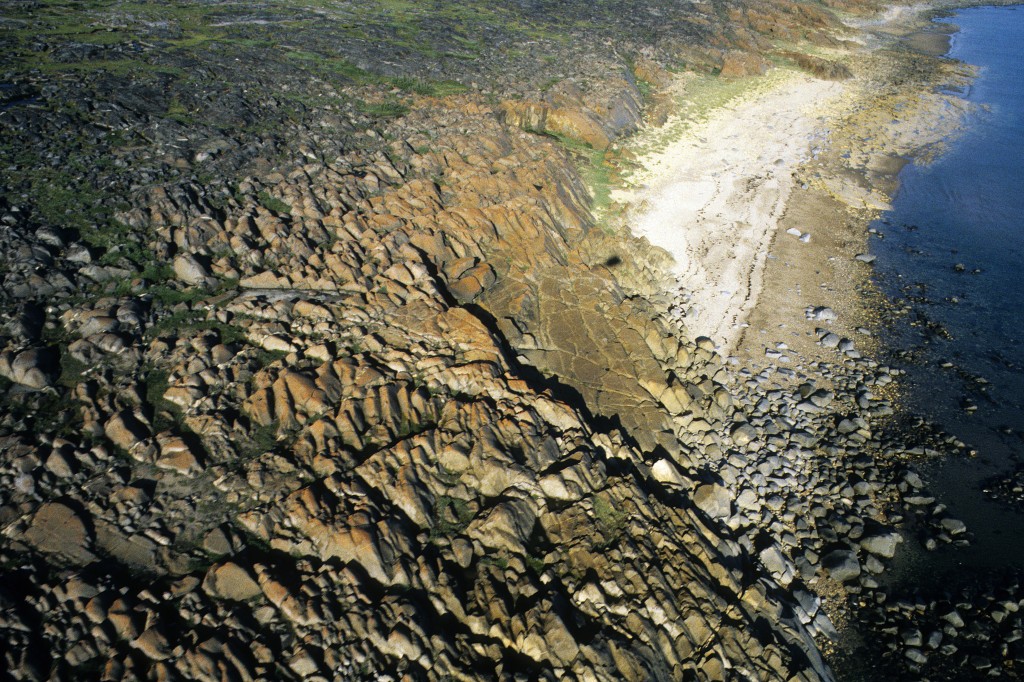
Isotelus rex was discovered on the shore of the Hudson Bay, close to the town of Churchill, Manitoba, Canada.
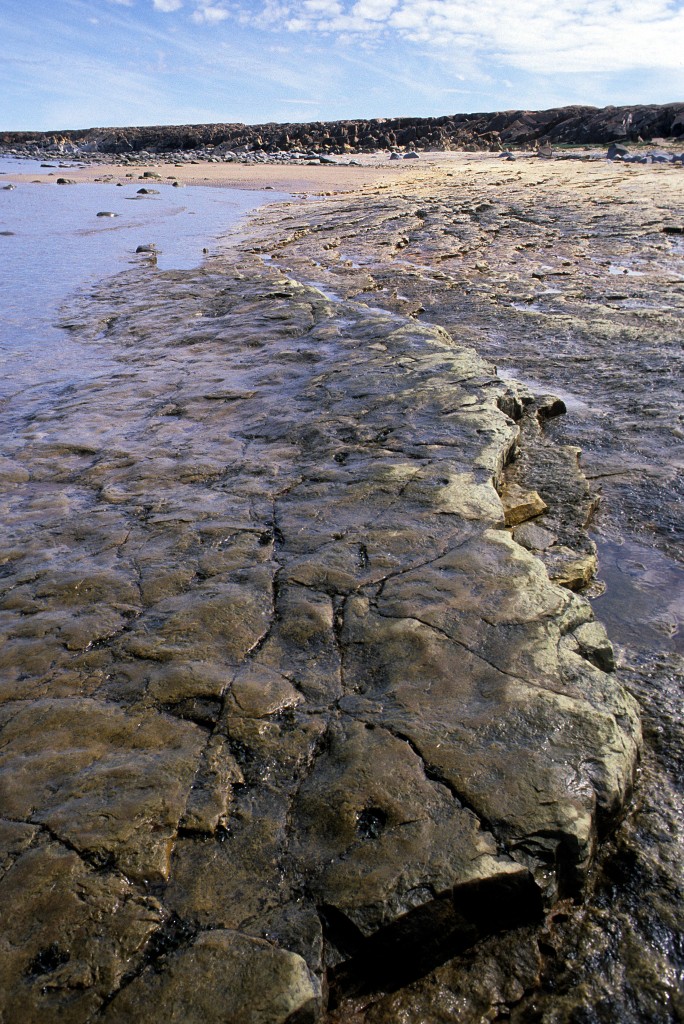
The Ordovician dolowackestone is assigned to the Late Ordovician Churchill River Group and is known to contain trace fossils. This location is only exposed at the lowest of tides.
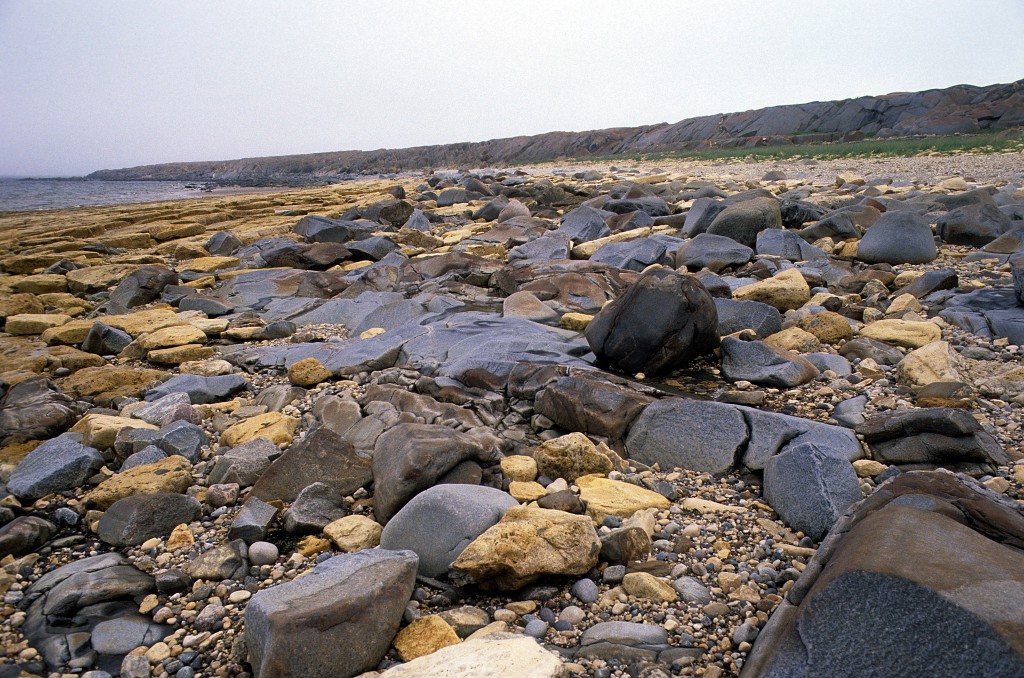
The pieces had to be carried by hand over the beach, over the hills and over the tundra to the 4X4 a few kilometers away
Images courtesy of Dave Rudkin

